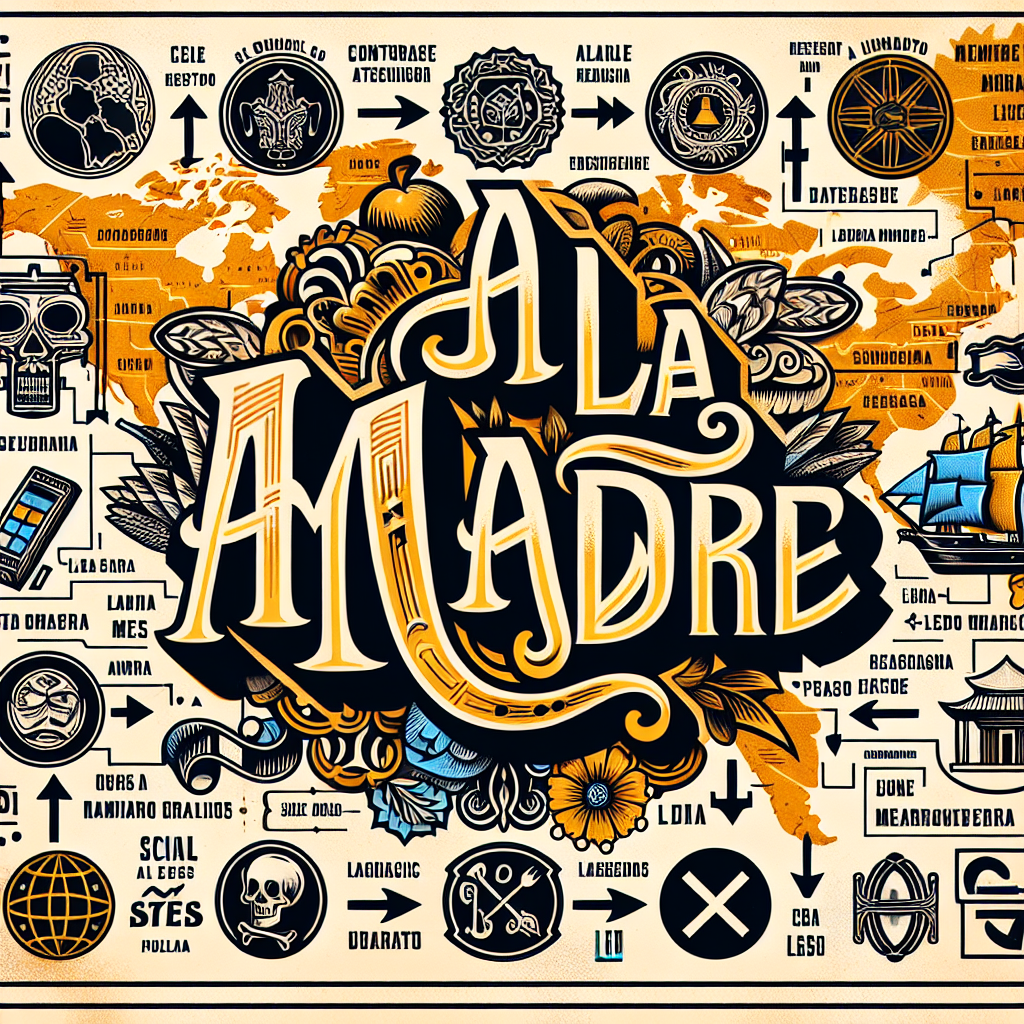Slang expressions are a fascinating aspect of language, offering insight into cultural nuances and social dynamics. One such expression is "a la madre," which, despite its seemingly straightforward composition, carries a variety of meanings and connotations depending on the context and region. This article delves into the origins, uses, and regional variations of "a la madre," providing a comprehensive understanding of this versatile phrase.
The Origins and Evolution of "A La Madre"
The expression "a la madre" originates from Spanish, where "madre" literally translates to "mother." However, in slang, it diverges significantly from its literal meaning. The phrase is believed to have evolved from expressions of surprise or emphasis, akin to saying "Oh my God" or "Holy cow" in English. Over time, its usage has broadened and morphed, reflecting changes in societal attitudes and linguistic creativity.
Initially, "a la madre" may have been used predominantly in informal settings, perhaps among close friends or family members. As it gained popularity, the phrase began to permeate various layers of society, becoming a staple in everyday conversation. Its evolution reflects broader trends in language, where expressions are continually adapted and repurposed to suit contemporary communication needs.
Common Contexts and Situations for Use
"A la madre" is often employed to express surprise, shock, or disbelief. For instance, if someone were to witness an unexpected event, they might exclaim, "¡A la madre!" akin to saying "Wow!" or "No way!" in English. This usage underscores the phrase’s role as an emotional amplifier, helping speakers convey heightened reactions succinctly and effectively.
In addition to surprise, the phrase can also denote frustration or irritation. For example, if someone is faced with a challenging or annoying situation, they might mutter "a la madre" under their breath. This flexibility in usage makes the phrase a valuable tool in everyday communication, allowing speakers to express a range of emotions with a single, versatile expression.
Regional Variations and Interpretations
While "a la madre" is widely recognized across Spanish-speaking regions, its interpretation can vary significantly depending on local dialects and cultural contexts. In Mexico, for example, the phrase is commonly used to express astonishment or excitement. Conversely, in other Latin American countries, the same expression might carry a slightly different connotation, perhaps leaning more towards frustration or exasperation.
Moreover, regional slang often incorporates additional words or phrases, creating unique variations that reflect local linguistic trends. In some areas, "a la madre" might be combined with other colloquial expressions to enhance its impact or tailor its meaning to specific situations. These regional differences highlight the dynamic nature of language and the importance of cultural context in understanding slang.
Comparisons with Similar Slang Expressions
When comparing "a la madre" to similar slang expressions in English, phrases like "Oh my God" or "Holy crap" come to mind. Both sets of expressions serve to convey strong emotional reactions, whether they be surprise, frustration, or excitement. However, the cultural connotations and subtleties of "a la madre" add a layer of complexity that is unique to Spanish-speaking contexts.
Additionally, other Spanish-language slang expressions, such as "¡No manches!" in Mexico or "¡Qué barbaridad!" in Spain, offer comparable functions. Each of these phrases serves as an exclamation, yet they differ in tone, formality, and regional usage. Comparing these expressions underscores the richness of slang and its ability to capture the diverse ways in which people communicate emotions and experiences.
Understanding slang like "a la madre" provides valuable insight into the cultural and linguistic intricacies of Spanish-speaking communities. The phrase’s origins, varied uses, and regional interpretations illustrate the dynamic nature of language and its ability to evolve over time. By exploring these elements, we gain a deeper appreciation for the richness and diversity of human expression, transcending literal translations to uncover the true essence of communication.

